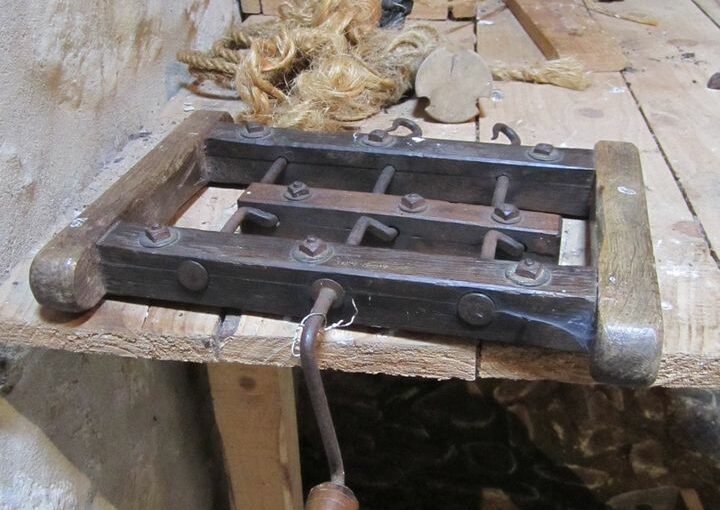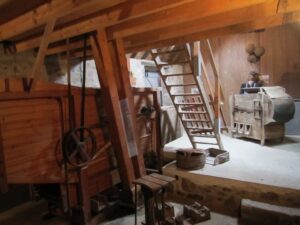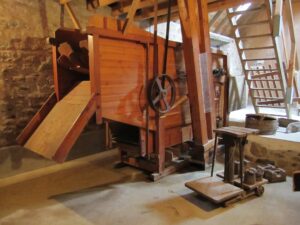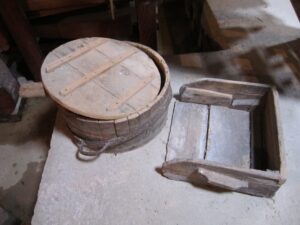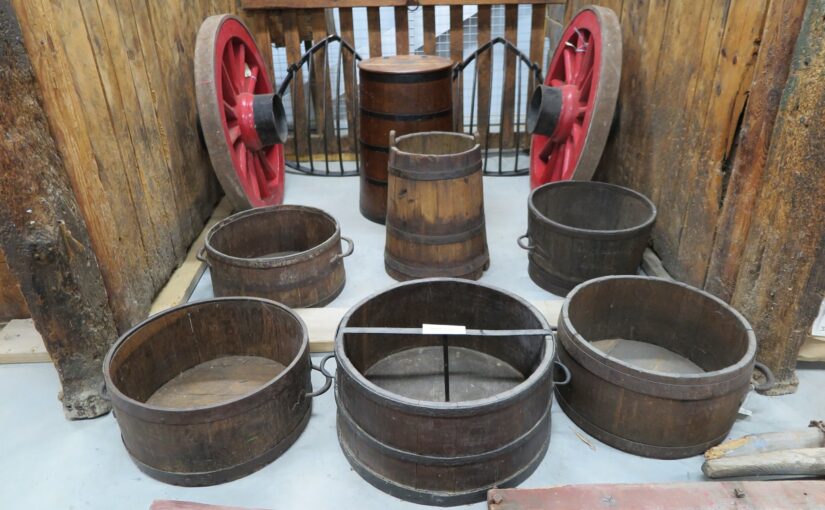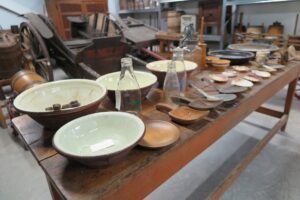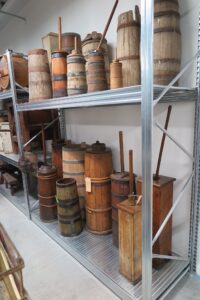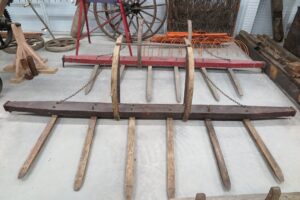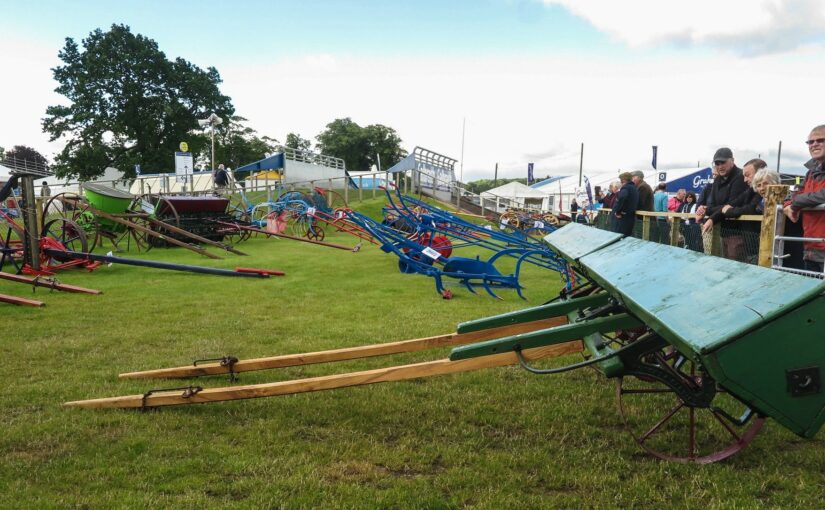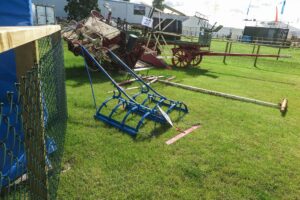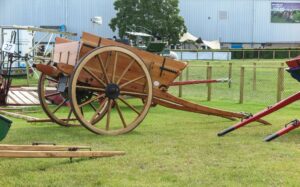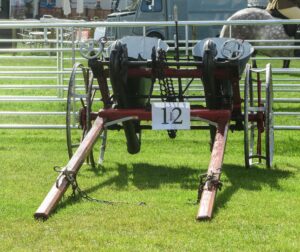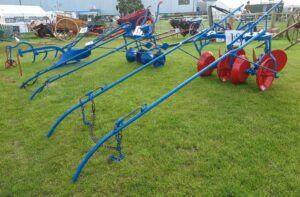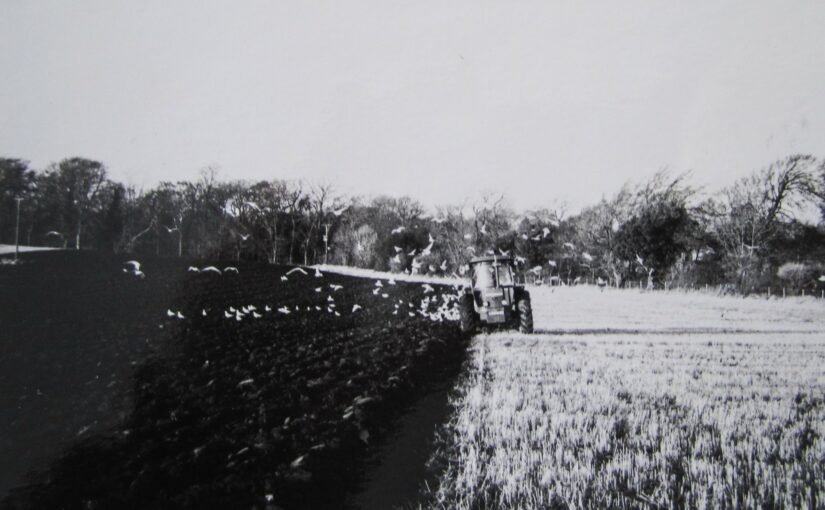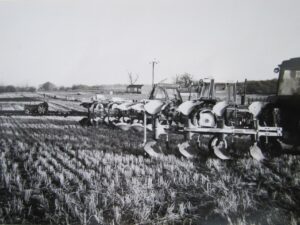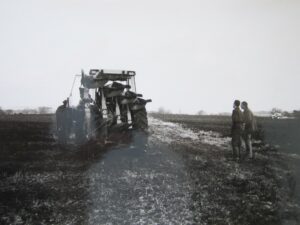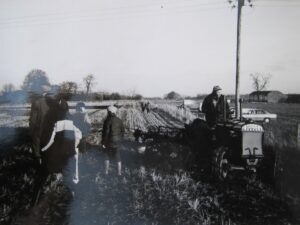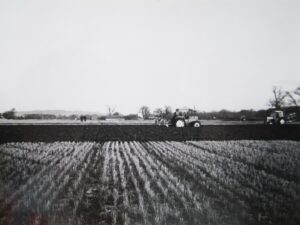We have previously mentioned that adverts for farm displenishing sales provide an important source of information on the use of agricultural implements and machines.
A sample of adverts for farm displenishing sales in Aberdeenshire in April 1875 provides a number of insights into farming in the county in that year. The Aberdeen press and journal records at least 5 displenishing sale from farms across the county.
They show old and modern implements and machines. On the old, a set of ox harness was for sale at Downiehills (though ox continued to be used into the twentieth century in the county), and wooden boarded ploughs. On the new, at East Fingask, Meldrum there is a new reaping machine. Milltown of Rora had a hay gatherer. East Fingask, Meldrum had a horse rake.
There are a range of ploughs being used for ploughing and making and working drills. There are both iron and wooden harrows. There are no makers’ names included. There are a smaller number of machines for harvesting crops as well as crop processing machines than there were in the adverts for displenshing sales at this time. There is a significant number of horse harness and carts.
Drum
2 box carts with tops; iron single and double ploughs; turnip sowing machine; turnip scrapers; iron and wooden harrows; iron grubber; and a general assortment of other farming implements. 3 set cart and plough harness; barn fan and other barn furniture, with some household furniture. The implements and harness are in good order, and the greater part lately new.
Milltown of Rora
Farming implements – an excellent thrashing mill, put in four years ago; barn fan; hay gatherer; turnip sower; iron grubber; 4 box carts; common and other ploughs; harrows; stone rollers; turnip cutting machine; cart and plough harness; corn bags; box and other barrows; and the usual assortment of other implements, together with a quantity of fencing wire and paling posts.
Downiehills
The implements imclude-5 box carts; 3 common ploughs; 1 double-boarded plough; 1 furrow, and 1 shim plough; 2 pairs iron, and 2 pairs wood harrow; one and two horse stone rollers; 4 box barrows; a grubber; a turnip sower; a broadcast sowing machine; 5 sets of horse harness; 1 set ox’ harness; barn fan; bushel measure; water casks; corn bruiser; stone rick stands; stone and wood cheese presser; an assortment of wright’s tools; dairy utensils, and sundry other articles-including the usual smaller implement; also a dog cart, and a set of harness.
Couliehare, Udny
Farming implements-4 box carts, with hay tops; 3 iron ploughs; 2 double mould board do; subsoil and shim do; grubbers; rollers; harrows; corn and turnip sowing machines; horse harness; barn fan; weighing machine and weights; meal girnal; sacks; sieves; barrows; graips; spades and water out-door implements.
East Fingask, Meldrum
The farming implements consist of – box carts, with tops; long cats; water do; common, double mould, and shim ploughs; stone and metal rollers; turnip sower; broadcast and drill sowing machines; zig zag and rotating harrows; grass seed do; grubbers; horse rake; reaping machine (new); horse harness; patent weighing machine and weights; sacks; sack barrow; riddles; sieves; wire strainer; oil cake breaker; turnip cutting machine; cross-cut saw; mangle; patent churn; kitchen utensils, &c.
The photographs were taken at the Aberdeenshire Farming Museum, August 2016.
